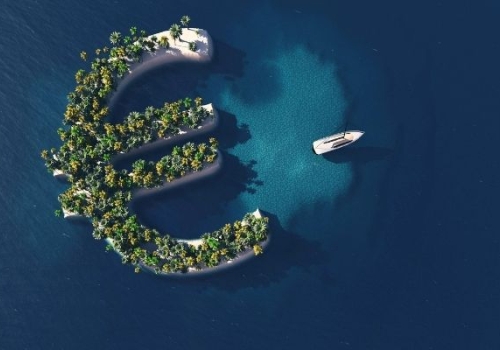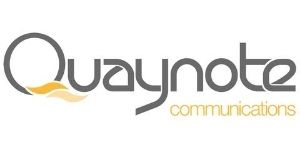Buying a Yacht or Jet in the UK or EU: What You Need to Know

For the uninitiated, the process of buying a yacht or jet anywhere in the world – then working out what tax and duty might be due in different jurisdictions – seems complicated enough. Then add Brexit into the mix and it can suddenly become even more complex. However, Brexit does bring silver linings, at least for some UK yacht and jet owners.
Providing their yachts and jets are privately owned and that everything is structured correctly, many UK owners who typically cruise in the Mediterranean or fly into the EU will now find that they no longer have to pay import VAT on their assets. As James Jaffa, partner at Jaffa & Co, observed at Quaynote's recent online conference, The Future for Superyachts, Business Jets & Luxury Property, this can potentially mean that for these UK owners, “operating their superyacht has become 20% cheaper.”
This scenario can be compared, if you like, to a Cayman Islands ownership structure that some owners might have chosen pre-Brexit. The critical component is that the yacht or aircraft meets the conditions of Temporary Admission (TA). Where yachts are concerned, historically what has happened is that a Cayman-owned yacht that is flagged and entirely owned outside the EU would be able to enter into the EU under TA without paying any duty or VAT, provided that it doesn't operate commercially or remain in the EU for longer than 18 months at a time.
A tax advisor we spoke to gives an example of how this works in practice. “I`m working on a transaction currently where we have a UK individual who is purchasing a yacht from a northern EU yard,” he explains. “The yard will export the vessel from the EU and the owner will take title after it's been exported. It will be purchased by an Isle of Man company who will sail it straight down to the Med.” No VAT or duty will be payable because the yacht meets Temporary Admission requirements in the EU – ie. it is privately operated, IOM-owned and IOM flagged. It is important to note that under TA, care must be taken when inviting EU residents on board as this should be done when the owner is also present in the EU – it is even better if they are on board the yacht.
Advisors have trod carefully with this turn of events, understandably cautious about interpreting a new set of circumstances and how these might affect their clients. “We recently took delivery of a 50m yacht for a UK owner that will cruise under Temporary Admission,” reflects James Jaffa (pictured below). “The owner is established outside the EU, the yacht is structured properly and yet there is a fear as this is brand new and untested.” Jaffa`s firm have taken extensive advice and have been given the go-ahead. “We`ve been told for UK owners operating privately, go ahead and cruise in the Med to your heart's content,” he says, adding: “It's been a big change for us as a law firm.”
 Temporary Admission has its place in the world of business aviation too. As of 31st December 2020, when Brexit Transitional Period expired, UK has left the EU's customs territory, instead creating its own customs territory with its Crown Dependencies. Consequently, if you formally import an aircraft into the UK now, this will only provide the owner with the UK Customs status of “domestic goods” and the right to fly into and within the UK (and Crown Dependencies) under free circulation. Conversely, if you formally import an aircraft into an EU Member State, it will achieve the EU customs status of “Union goods” and be entitled to fly into and within the EU under free circulation.
Temporary Admission has its place in the world of business aviation too. As of 31st December 2020, when Brexit Transitional Period expired, UK has left the EU's customs territory, instead creating its own customs territory with its Crown Dependencies. Consequently, if you formally import an aircraft into the UK now, this will only provide the owner with the UK Customs status of “domestic goods” and the right to fly into and within the UK (and Crown Dependencies) under free circulation. Conversely, if you formally import an aircraft into an EU Member State, it will achieve the EU customs status of “Union goods” and be entitled to fly into and within the EU under free circulation.
“Effectively, Brexit has highlighted this fundamental position that where you can't be in free circulation in two places at once – ie. goods are only in free circulation in the country where they are physically located at that time (excluding under TA). Therefore, in the case of the UK/EU, owners either pick which is the most appropriate place to import through and choose that location or consider importing through the UK and the EU should that be necessary.” That said, it's usually an obvious decision. If you live in the EU, you will likely need to import your aircraft into the EU. If you live in the UK, then you would likely need to import your aircraft into the UK.
Where it becomes more problematic is if you have an owner who lives in the EU but who has interests in the UK as well, or vice versa. In these circumstances, a dual importation through both territories could be necessary if the conditions for TA cannot be met. However, many clients don't have an appetite for operating yachts or aircraft under TA, believing the risks of non-compliance and a potential requirement to import their risks and pay import VAT duty to be risky, with only a planned and executed formal importation being acceptable for their purposes.
So, will clients undertaking dual importation be required to pay VAT in both territories? The simple answer to this is yes unless there is an entitlement to zero-rate the import. However, for corporate aircrafts which are operated for business purposes, there are certain options available whereby import VAT can be reclaimed. Moreover, if the asset is not used for business purposes there is the likelihood that a physical net VAT payment on that asset will be necessary.
So, is there a right for all corporate aircraft to be zero-rated on import? “It does get complicated,” commented one expert. “If an aircraft is operated on an AOC, if it's truly commercially chartered to third parties, then that sector is broadly zero-rated, so you'd invariably be able to zero rate the import.” However there are different approaches to VAT treatment in situations where a corporate aircraft (that is not operated under an AOC) which is leased within a corporate group for international business travel purposes. In such circumstances, many owners and advisors would consider it appropriate to zero-rate the import of such aircraft. However, due to the fact that neither the UK nor the EU`s VAT regulations strictly prohibit zero-rating to AOCs only, there is the capacity for corporate jets to be zero-rated in certain jurisdictions as well.
To summarize, what has changed post-Brexit is that your asset, be it a yacht or jet, needs to be compliant with the different VAT and customs regulations in both the UK and the EU to the extent that it physically travels to these jurisdictions. Unless the conditions to operate under these are met, there will be a requirement to formally import the asset and deal with the prevailing VAT and customs formalities, which could include the physical payment of VAT/duty. For many UK owners, a UK importation of their asset and EU operations being performed under TA may be sufficient. Similarly, an EU owner may be content to only have EU customs status, relying on TA in the UK.
However, where owners have a more international footprint with a nexus in both locations, a failure to meet the TA conditions may exist and a resulting requirement to hold customs status / perform importations in both locations. It is also important for owners of pre-Brexit assets to understand what the customs status of their asset is as a result of its physical location at 23.00 (GMT) / 24.00 (CET) on 31 December 2021 as this will have a direct impact on its customs status thereafter.


Post your comment
You cannot post comments until you have logged in.
Login to post a commentComments
No one has commented on this page yet.
RSS feed for comments on this page | RSS feed for all comments